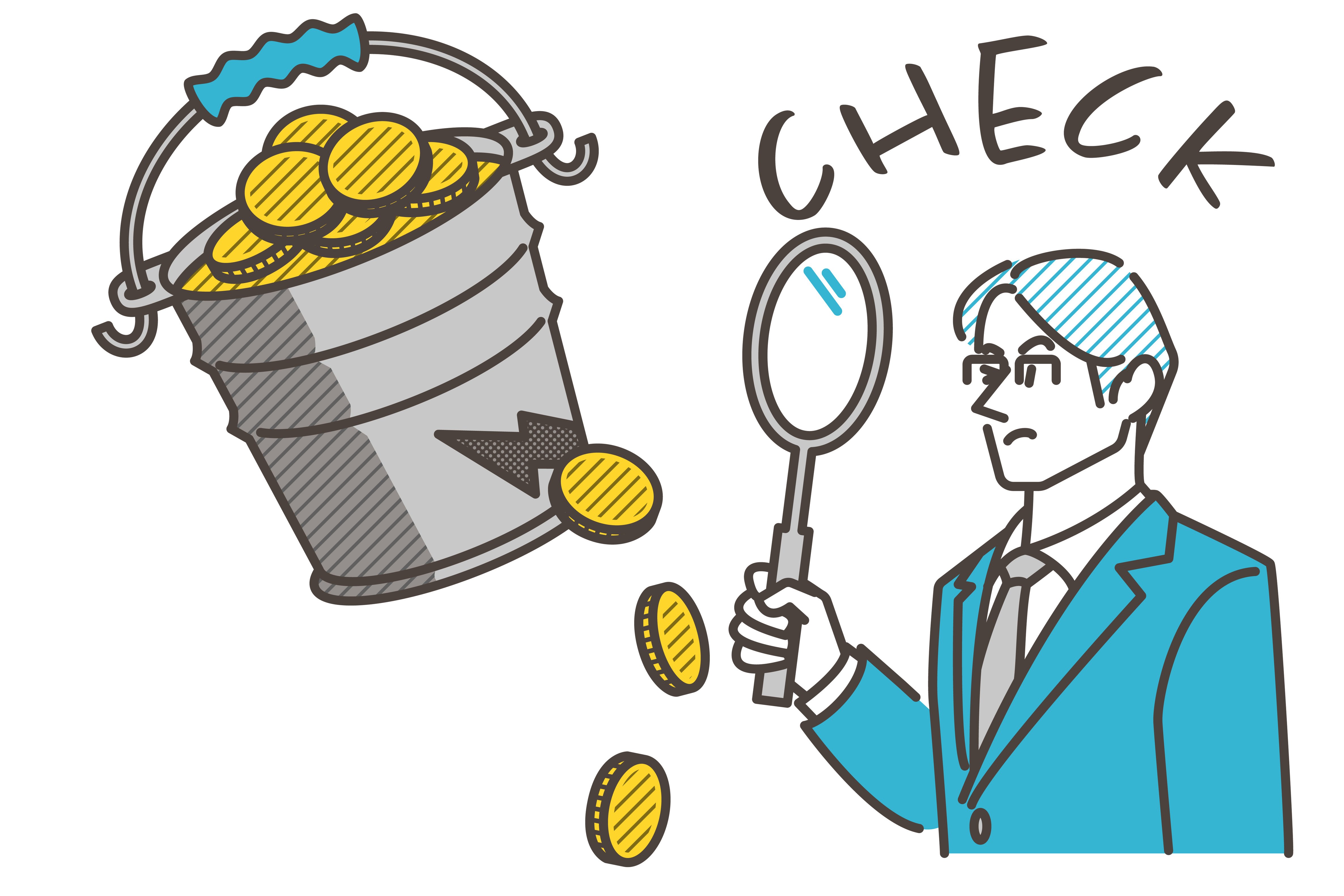As a business owner or entrepreneur, you understand that cash is crucial. But do you fully grasp how to measure the amount of cash your company is burning through each month?
In this post, we’ll dive into what cash burn is, why tracking it is essential, and how it affects your company’s financial health. We’ll explain the different types of cash burn, show you how to calculate both gross and net burn, and highlight the importance of forecasting your cash burn for your business's survival and growth. Additionally, we’ll offer practical tips for managing your cash burn, including key benchmarks and strategies for reducing unnecessary expenses.
We’ll also explore how understanding your cash burn can help you make smarter decisions, whether that’s scaling operations or reinvesting in vital areas such as product development or customer retention. By using cash burn as a tool, you can position your business for sustainable growth and long-term profitability.
What is cash burn?
Cash burn is the measure of how quickly a company is using up its cash reserves. It's calculated by subtracting total cash spent from the initial cash balance.
Startups and businesses need to track cash burn to manage their financial health and runway. Reducing expenses, increasing revenue, and budgeting can help control cash burn.
Understanding cash burn categories
The types of burn rates include gross burn rate and net burn rate.
- Gross burn = the total amount of money a company spends in a given period of time.
- Net Burn = the amount spent minus revenue generated.
Managing cash flow is essential for sustainability, and it helps companies forecast their future financial needs accurately. Small- to medium-sized businesses need to determine their monthly operating expenses as this essential metric is critical in determining the number of months of runway available before they are out of money.
How to calculate gross and net burn
In order to control how much cash your business is burning through each month and manage your cash reserves effectively, it's essential to understand the concept of gross and net burn rate. You can easily calculate both with formulas based on monthly costs and revenues. Be sure to keep close tabs on your operating expenses and adjust them accordingly.
Cash burn rate calculator
To calculate the cash flow metric of how much cash your business is losing per month, you need to know your gross and net burn rates.
Gross burn rate refers to the total amount of money your company spends every month on operating expenses such as payroll, rent, R&D expenditures, etc. Net burn rate is the difference between your monthly revenue streams and your monthly operating expenses.
- Calculating Gross Burn Rate: Add up all monthly expenses such as salaries and rent on a monthly basis.
- Calculating Net Burn Rate: Subtract your monthly revenue from gross burn rate.
To easily determine your cash burn rate, use this formula:
Monthly Burn Rate x Number of Months of Runway = Cash Burn Rate
Controlling spending through cost-saving measures can also help businesses manage their cash flow. Always monitor your cash balance through the essential metric, which is cash runway forecasting.
Importance of forecasting cash burn
Precise forecasting helps businesses plan their expenses and make required adjustments for maintaining profitability. Venture capitalists assess the rate of cash burn to evaluate financial stability. Hence, it's crucial to keep a check on this metric regularly to avoid negative cash flow scenarios.'
Managing cash burn for SMBs
For small- to medium-sized businesses or startups, managing cash flow is critical for their sustainability and profitability. One essential metric to monitor is the burn rate calculation which involves the net amount of cash a firm expends over a given period of time.
To manage this effectively, start by calculating your monthly burn rate using the following formula:
Total expenses / number of months of runway.
Track all inflows and outflows through your bank account or financial statements regularly. Prioritize spending on essential items and consider cost-cutting measures to reduce high burn rates. Plan for fundraising or revenue generation to sustain your venture's growth objectives while maintaining positive cash flows. Regular reviews and adjustments to your cash burn strategy will be necessary as the business evolves further.
If fundraising or revenue generation is slow at the moment, consider accounts receivables financing. An accounts receivable financing company will issue a loan to the vendor for most—often up to 90 percent—of the value of the unpaid invoice. After the customer passes their credit check, you have $9,000 to cover your business expenses.
Then, when the customer pays their invoice, the AR financing company charges their fee, and pays the vendor the remaining amount.
Learn more: What SMBs Need to Know About Accounts Receivable Financing
Benchmarks for cash burn
To ensure the financial stability of your business while calculating cash burn, it's vital to keep an eye on benchmarks that vary according to industry type, growth stage, and funding sources. For instance, early-stage startups invest more in product development and market validation resulting in a higher cash flow, which is not the case with established companies who prioritize revenue generation while keeping their expenditures low.
Calculating runway and forecasting cash burn
It's essential to determine the length of time a business can survive with current cash reserves and projected expenditures. Calculating the runway allows you to forecast future spending requirements and make necessary adjustments to avoid negative cash flow.
Careful monitoring of cash flow statements helps identify cost drivers and opportunities for optimization. Effective control of the net burn rate requires difficult choices like trimming non-essential costs or securing additional rounds of venture capital financing.
Strategies to control cash burn
Companies can control their cash burn by prioritizing spending on essential expenses, tracking every cent spent using accounting software, outsourcing non-core tasks to reduce operational costs, negotiating better net terms with vendors to save money, and having a contingency plan in place for unexpected expenses or emergencies.
Re-evaluating recurring costs and optimizing payroll expenses can help reduce operating expenses and increase the runway. By regularly tracking the cash flow and analyzing areas where they can save money or increase revenue using metrics like gross burn rate or net burn rate calculation, companies can forecast their cash burn accurately.
Venture capitalists pay close attention to a firm's financial statements like balance sheets and cash flow statements to evaluate its sustainability.
Read about: How to Keep Your Business Cash Flow Running
1. Re-evaluate your recurring costs
Keeping an eye on these costs regularly is an essential metric that can help you identify areas where you can cut back or negotiate for better pricing. Additionally, using budgeting tools and tracking software can provide a crystal-clear view of your expenditures and help you maintain financial stability. Don't forget to keep this in mind when forecasting cash burn and determining the amount of runway available.
2. Optimize your payroll expenses
Simply put, optimizing payroll expenses is essential. Reducing employee hours or implementing a hiring freeze are effective cost-cutting measures. Additionally, outsourcing certain tasks or offering alternative compensation options such as equity or profit-sharing can help reduce operating expenses. Regularly reviewing and adjusting your payroll expenses can significantly increase your cash balance while ensuring sustainability in the early stages of your business.
How SMBs use cash burn
Small- to medium-sized businesses and startups require effective cash management for long-term success. This includes:
- Understanding how to calculate cash burn, a vital metric that involves subtracting operating expenses from available cash.
- Implementing the gross or net burn rate calculation to control cash burn.
- Prioritizing spending, reducing costs, and seeking extra funding if necessary can help maintain a positive cash flow balance.
- And finally, combining financial modeling with forecasting helps determine the amount of money required and the available runway period of time.
Mastering these techniques is fundamental for your company’s profitability and sustainability.
Why is cash burn so important?
Cash burn is a crucial aspect of financial management for any business, and it requires careful planning and control. Calculating and forecasting your cash burn rate can help you make informed decisions, optimize expenses, and extend the runway.
It's essential to understand the different categories that contribute to cash burn and identify the key drivers that impact it. With this knowledge, you can prioritize growth objectives, re-invest in existing customers, and optimize recurring costs.
Learn more about strategies to manage and control your spend effectively by offering net terms with Resolve.







